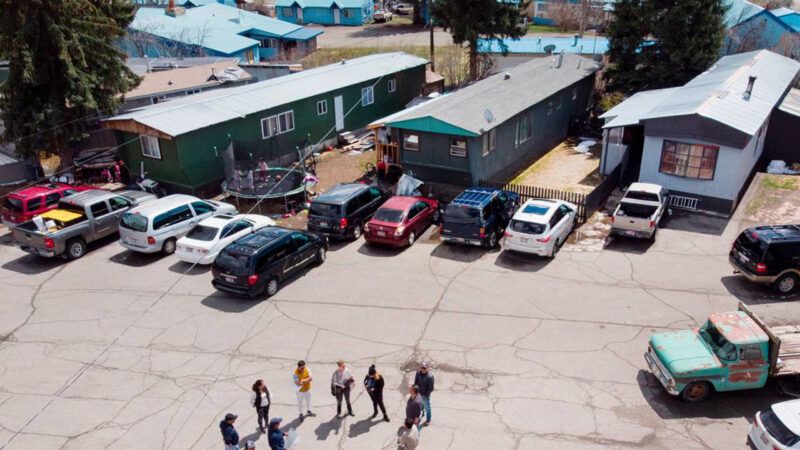Mobile Homes Are a Crucial Source of Affordable Housing. Politicians Are Trying To Zone Them Out of Town.
The government should not take away reliable and affordable housing from those who need it most.

Across the country, legislators are piling on regulations and restrictions that make it harder to build and maintain affordable housing at a time of desperate need.
In Dover-Foxcroft, a small town in Maine,a drafted moratorium on manufactured housing says it "threatens the area's character and cultural value of the town." In Blount County, Alabama, there's an outright ban on homes smaller than 1,800 square feet. In Tate County, Mississippi, new zoning restrictions mean some residents can't place a manufactured home on their own land.
Zoning laws in Slaughterville, Oklahoma, were recently passed that include the word "blight" when referring to mobile homes and describe them as "reduc[ing] the quality of life" for other residents. Park owners are now required to space homes 10 times farther apart and to plant 12-foot-high shrubs in a buffer zone around any new mobile home parks to literally hide mobile homes from view.
From Texas to West Virginia and almost everywhere in between, you'll find zoning laws that aren't so subtle in banning mobile homes and mobile home parks altogether. From urban to suburban to rural areas, legislation is being considered and often passed into law that tacks on costs, makes it harder to own a mobile home, and in many cases makes it untenable to ever build a new mobile home park.
Perhaps legislators fear the high crime rates of mobile home parks? That concern has been debunked—crime rates in mobile home communities simply mirror the rates of their neighborhoods. Other studies have found that mobile homes produce less construction waste by a factor of 2.5 and are significantly more energy efficient than traditional homes. Still, others say mobile home parks seem prone to natural disasters like flooding—but the reality is that affordable housing, to be affordable, often must be built on some of the cheapest land, which faces higher hazards.
Maybe people simply don't like to see the realities of low-income communities, but mobile homes are crucial for low-wage workers. According to Fannie Mae: "The median annual household income of manufactured home residents who own their homes is about $35,000, half of the median annual income of site-built homeowners….Over one-third of renters of manufactured homes earn less than $20,000 per year and over three-quarters earn less than $50,000 per year."
With that in mind, the drive to ban affordable housing comes at a cost for middle- and upper-class communities too. Who's going to wait on middle-class and upper-income customers at the local restaurant? Who's going to drive the bus that gets that waiter to the restaurant? Who's going to staff the facility where the bus fills up?
Over the long term, the ripple effect of high housing costs will extend to manufacturing, retail, and medicine prices, as well as any industry with low-wage jobs. Government regulations are causing housing prices to rise beyond the means of low-wage workers; they are being forced to live further away from the communities in which they work and to bear additional transportation costs and higher housing costs for no good reason. Sooner or later, the system becomes unsustainable, prices rise, and businesses close.
But some communities have taken a more pragmatic approach toward affordable housing, and the choice has proven popular. In the mountain town of Granby, Colorado, where the local ski resort economy has made housing unaffordable for many workers, a new development has started selling manufactured homes at just one-third of the average county home sale price.
Just as Granby did, it's time to rethink assumptions and attitudes toward affordable housing. Tiny homes, recreational vehicles, and mobile homes are housing options that offer greater financial freedom than traditional site-built housing. These new living dwellings are fighting NIMBY attitudes from local government elected officials that favor increasingly expensive traditional housing.
There are approximately 22 million people living in manufactured homes today. The trend is similar for other forms of alternative, affordable housing. As housing costs rise, options for affordable housing are narrowed by misguided regulations from government officials.
Mobile home parks offer a reliable, affordable, sustainable path to home ownership for those who need it most. Governments should not take away options for affordable housing, especially in this time of desperate need.


Show Comments (65)